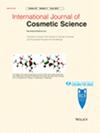Combination of liquid- and solid-phase extraction followed by achiral and chiral high-performance liquid chromatography as an efficient and sensitive method for determination of panthenol in personal care products
Abstract
Objective
This work deals with the development of an analytical method for the analysis of body milk, cream, and oil. The objective is to develop a reliable, sensitive, and reproducible method suitable to assess the content of dexpanthenol in personal care products and to confirm the declared enantiomeric form.
Methods
Optimization of conditions for the extraction of panthenol from personal care products was carried out for the detection and quantification of panthenol and its enantiomers by achiral and chiral high-performance liquid chromatography (HPLC) with spectrophotometric detection. Polarimetric and circular dichroism detection in chiral HPLC were also used for the confirmation of enantiomeric forms of panthenol.
Results
Optimal extraction media, chloroform:water 1:3 (v:v) for liquid-phase extraction and NH2 type adsorbent for solid-phase extraction have been selected. A combined extraction procedure was useful for the treatment of complex fat cosmetic samples, achieving recoveries of 83.1%, 88.2%, and 83.0% for body milk, cream, and oil, respectively (RSD < 1.6%). The achiral HPLC method with a C18 type stationary phase and acetonitrile:water (10:90, v:v) as a mobile phase, and the chiral HPLC method with an amylose tris(3,5-dimethylphenylcarbamate) stationary phase and a mobile phase composed of n-hexane and ethanol (60:40, v:v) were used for the analysis of extracts.
Conclusion
The proposed extraction procedure is compatible with both the reversed-phase and normal-phase liquid chromatographic systems and is applicable in the analysis of a wide group of personal care products. The d-enantiomeric form (dexpanthenol) was detected in tested samples. The content of dexpanthenol in body milk, cream, and oil samples was found to be 0.2%–1.5%, 0.04%–0.7%, and 0.01%–0.03%, respectively.


 求助内容:
求助内容: 应助结果提醒方式:
应助结果提醒方式:


